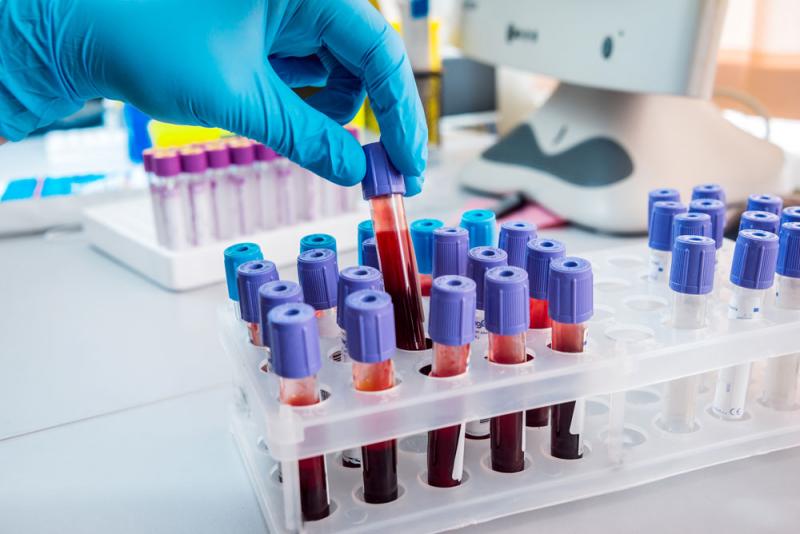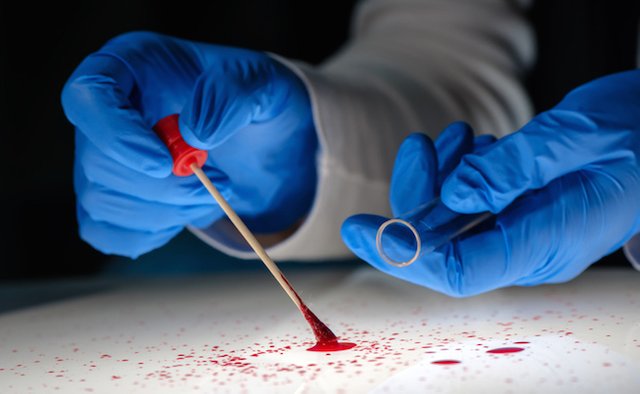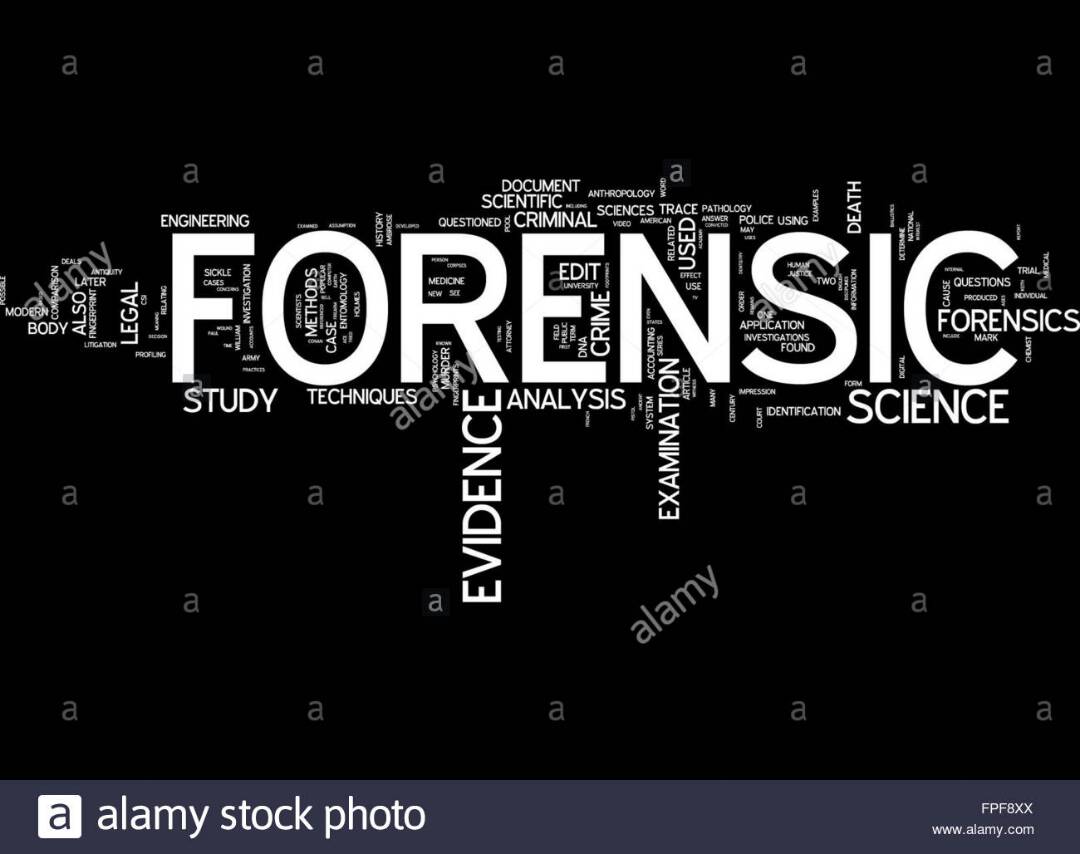The Sun smiled at the earth as it rose in the East. The birds flew confidently in the blue sky and the cool harmattan breeze blew gently across my face. I had just got to the office and was admiring the awesome beauty of nature when I heard a knock at my door. “Come in”. I said subtly. “Oga good morning. Some people have brought a handkerchief and I think you need to see them sir” said one of my workers who works at my laboratory. “Alright. Please tell them I'm coming” I replied while I quickly packed up the books at my table. “Good morning sir. Good morning madam. My worker here just told me that you brought a handkerchief” I said to the middle aged man and his wife.
“Yes sir. A group of robbers came to our house yesterday night. With the help of the police, a suspect has been arrested and is under interrogation. At the early hours of today my daughter saw this handkerchief while sweeping the floor. After finding out it wasn't for any of us, we brought it here for a test. It has a little blood stain on it and I remember one of the robbers was holding a handkerchief and had a slight cut in his hand.
The suspect caught also has a slight cut but has since refuted to being one of the robbers. We have brought the handkerchief for a test sir. Since we heard it's possible” said the middle aged man. “Alright. I'll examine it sir. Please come back tomorrow morning sir”. I replied the seemingly impatient couple. I have been a pathologist for the past six months and this was the first time I was going to be using my knowledge on forensic science to solve a criminal case.
What I did
Forensic science involves the process whereby standard biochemical procedures are applied in criminal investigation. It includes all processes which are involved in the determination of blood type, blood stain examination, blood testing, analysis of serum, analysis of saliva, preparation of testimony and presentation at trials.
Procedures Involved in Forensic Science
In the world of criminal justice, blood is the most popular fluid. Bloodstain patterns can go as long as revealing the position and movement during a crime scene, who was the first to strike, in what manner and even how many times. Thus, it is usually used as a last resort to finalise crime cases, bringing an end to arguments and doubts. Before a sample such as blood can be fully analysed, it is taken through a presumptive test to make sure the sample is really blood.
One of these presumptive tests is the Kastle-Mayer test which is an inexpensive, easy and reliable method for detecting the presence of blood. The Kastle-Mayer test uses phenolphthalein which, when in contact with haemoglobin, releases peroxidase enzymes that causes a bright pink colour to form. Another presumptive test, the luminol test is used to detect invisible bloodstains. In this method, a chemical is sprayed on any material which is suspected to have a bloodstain. The appearance of a slight photosensitive light in dark indicate the presence of a bloodstain in the spot where the light appears. Other tests which can be used include Teichman test, Takayama test and Wagenhaar test.
After detecting the sample as blood, the blood sample is then taken through a test to determine the blood group and genotype of that sample. This procedure is called blood typing.
Blood Typing - A Major Procedure in Forensic Science
Blood typing include all the processes involved in the identification of the blood group and genotype of blood. The blood group can either be Blood group A, B, AB or O. The genotype of the blood can either be AA, AS or SS. Though blood typing cannot specifically identify a culprit, it can be used to rule out possible doubts. For example, if the blood test identifies the blood sample as belonging to blood group A and genotype AS and this is same with that of the culprit, it means there is a high probability that the culprit might be involved in the crime scene although it is not a hundred percent surety.
Conclusion
Well, after testing the sample blood from the handkerchief given to me by the couple, the results showed that the sample blood belonged to blood group AB and genotype AA which matched with the genotype of the suspect. Upon seeing the results, the couple were really excited. They took the results to the police and after much pressure by the police on the suspect, he finally confessed to being among the robbers who had robbed the couple. The police gathered enough information to get the rest of the robbers.
They were caught, rounded up and punished according to the law. The couple later came back again to my office to thank me. “You’re really a blessing sir” they said in unison as they both smiled at me. “Thanks to forensic science which has been a blessing to the 21st century”. I replied while smiling with confidence.
References
Wikipedia
Crimesceneinvestigator
Aafs



Downvoting a post can decrease pending rewards and make it less visible. Common reasons:
Submit
Waw... This is an interesting and educative post... Thanks to the 21st century development, we can actually know the truth from lies.
Keep it up my friend.
Downvoting a post can decrease pending rewards and make it less visible. Common reasons:
Submit
Oh yes, thanks to development in science. I am glad you enjoyed it.
Downvoting a post can decrease pending rewards and make it less visible. Common reasons:
Submit
The creativity exhibited made the post quite interesting. well done shodiya
Downvoting a post can decrease pending rewards and make it less visible. Common reasons:
Submit
Thank you
Downvoting a post can decrease pending rewards and make it less visible. Common reasons:
Submit
Really interesting piece @shodiya,
I really wish Forensic Science will become more pronounce here in Nigeria replacing the Suspect-must-die interrogation method used. It will also create job for many paramedics out there...
Downvoting a post can decrease pending rewards and make it less visible. Common reasons:
Submit
Exactly. It will also ensure some level of accuracy in the fight against crime.
Downvoting a post can decrease pending rewards and make it less visible. Common reasons:
Submit